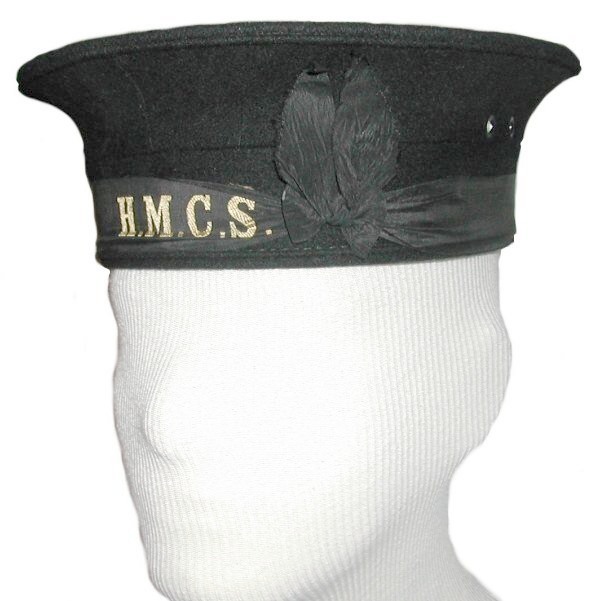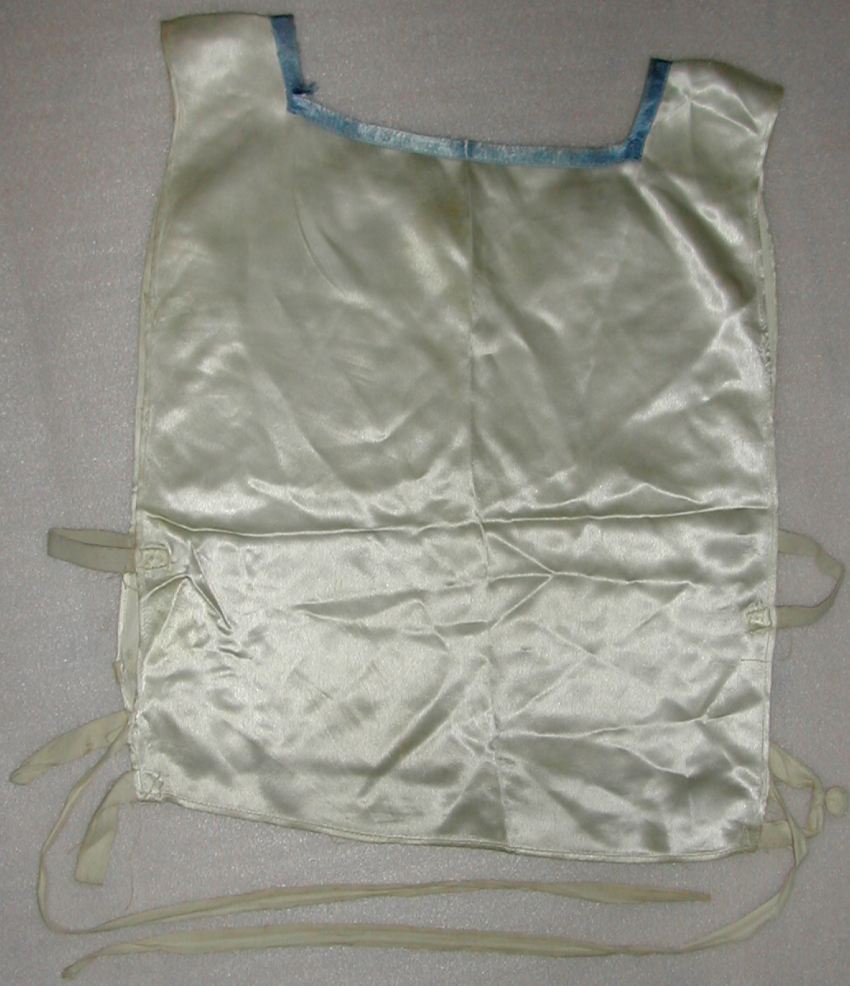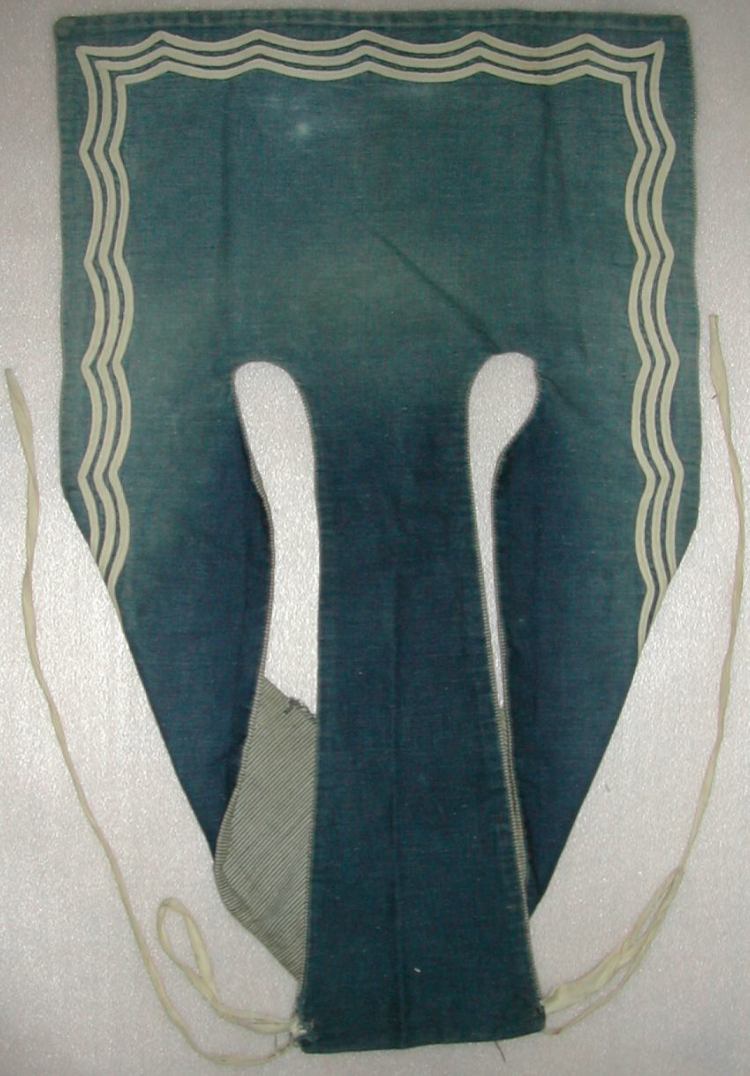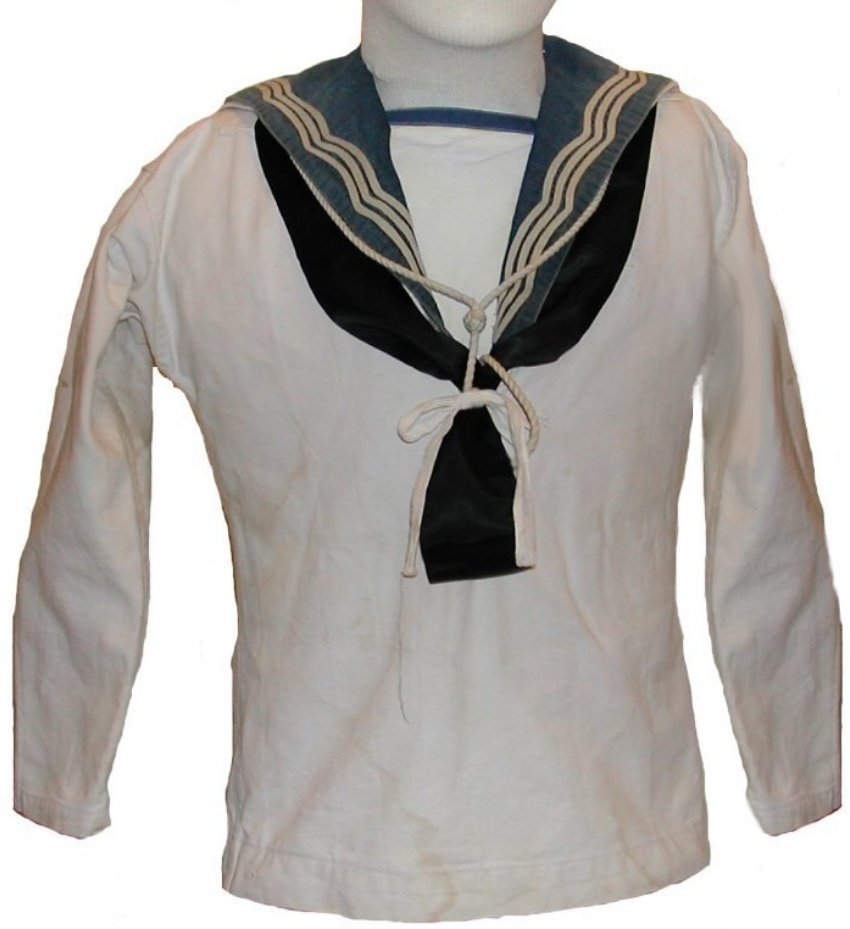


The Class II Uniform consisted of a jumper and bellbottom trousers with the navy flat cap. The image above is of a young RCNVR seaman circa the mid 1920s. He is wearing an early pattern cap with RCNVR cap ribbon, blue serge jumper and blue collar with three white "wavy navy" tapes.
Of interest are the 3/4 inch embroidered "V" badges on his cuffs, indicating Volunteer status. These were introduced into British service in 1923, evidently Canada also adopted the practice.
With the exception of the cap ribbon and "V" badges, this uniform is identical to that worn throughout the First World War.
The normal cap worn in Class II Rig was the well known flat cap made of blue cloth. It was always worn with the appropriate cap ribbon. Removable khaki, oilskin or white cap covers were provided, and worn according to local dress instructions. Sennet hats were introduced into Royal Navy Service in the late 1800's and were worn by the Canadian Navy until the mid 1920's. They provided a great deal more protection from the sun and rain than the flat cap and were very popular. Sennet hats were also worn by officers, especially on Naval landing parties.









The flannel was a short sleeve wool shirt. It was usually cut for a very close fit and sometimes the sides were slit for ease of dressing. It was bound around the top with 1/2 inch blue denim.



A number of different patterns of blue denim collars were issued. These were buttoned or tied inside the jumper, with only the back and a few inches of the sides showing. As the blue tended to fade with age, some sailors would wash and rewash their collars to give the impression of long service.

The collar worn by RNCVR and RCNVR ratings from the First World War until the mid 1920s had 3 wavy tapes. Although this pattern of tape was declared obsolete in 1923, the collars continued in wear for a number of years.

Typical collar worn by RCN ratings from 1910 to the 1950s. This pattern was also worn by RCNVR ratings as of the early 1920s.

A long black silk handkerchief was worn as a necktie. The ends were joined by sewing or pinning into a loop, the join was concealed under the collar and the loop in front, known as the "bight" was secured by the two black tapes on the front of the jumper. For dress occasions the knot was tied in a bowtie, for duty, in a sailor's knot. The end of the illustrated handkerchief has been fanned out to show the folds. Note the white NAVAL stamp near the edge.

Blue wool serge trousers were worn with the blue jumper. The trousers were a 4 button fall front pattern, the waist area was lined with denim. Note that in the Class II Uniform the trouser creases are at the sides.

Closeup view of the trousers illustrating the fall front and buttons.

Closeup of the manufacture's label and the "NAVAL" property stamp. This stamp indicated that the article of clothing was Canadian Navy property and conformed to Navy standards.
Gaiters or leggings were worn on guard and patrol duties and on some occasions, for training and parades. They were worn by all ratings up to the rank of Chief Petty Officer. Gaiters were made of a khaki coloured web material and were secured by two brass tabbed buckles and a length of thin cord fashioned into loops. Gaiters were whitenened or left in the original khaki colour subject to local dress instructions. Similar gaiters made of blackened leather were worn by Officers in some orders of working uniform.




